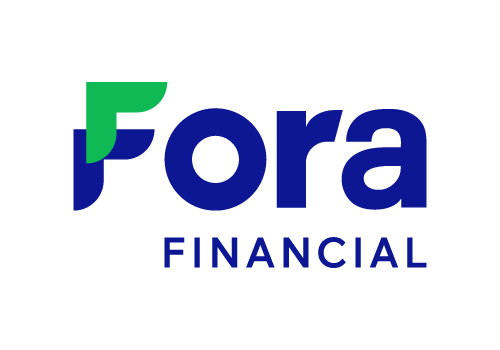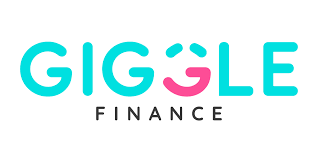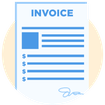Best Working Capital Loans of 2025
Many, or all, of the products featured on this page are from our advertising partners who compensate us when you take certain actions on our website or click to take an action on their website. However, this does not influence our evaluations. Our opinions are our own. Here is a list of our partners and here's how we make money.
With the uncertainty surrounding tariffs, many small-business owners are facing added financial stress. If you need fast access to a lump sum of financing to help you cover costs and expenses during this time, a working capital loan may be a good option.
With a working capital loan, you'll receive your funds upfront and pay them back over a specific period of time. If you'd prefer a set amount of funds that you can draw from as needed, on the other hand, you might consider a business line of credit instead.
How much do you need?
We’ll start with a brief questionnaire to better understand the unique needs of your business.
Once we uncover your personalized matches, our team will consult you on the process moving forward.
Why trust NerdWallet
6 best working capital loan options
| Product | Max loan amount | Min. credit score | Learn more |
|---|---|---|---|
 SBA 7(a) loan Apply now with Fundera by NerdWallet | $5,000,000 | 650 | Apply now with Fundera by NerdWallet |
 Fora Financial - Online term loan NerdWallet Rating Apply now with Fundera by NerdWallet | $1,500,000 | 570 | Apply now with Fundera by NerdWallet |
 Bluevine - Line of credit NerdWallet Rating Apply now with Fundera by NerdWallet | $250,000 | 625 | Apply now with Fundera by NerdWallet |
 Headway Capital - Line of credit NerdWallet Rating Apply now with Fundera by NerdWallet | $100,000 | 625 | Apply now with Fundera by NerdWallet |
 Giggle Finance - Merchant cash advance Apply now with Fundera by NerdWallet | $10,000 | 300 | Apply now with Fundera by NerdWallet |
 iBusiness Funding - Online term loan NerdWallet Rating Apply now with Fundera by NerdWallet | $500,000 | 660 | Apply now with Fundera by NerdWallet |
👉 Have bad credit?
Check out NerdWallet's best business loans for bad credit for more financing options.
What is a working capital loan?
A working capital loan is a short-term business loan used to cover your business’s day-to-day expenses. These loans may help you pay for rent, payroll, utilities, supplies, inventory and accrued expenses like taxes.
Working capital loans are often:
Quick to fund.
Have short repayment periods.
Issued by banks, credit unions or online lenders.
When you should consider a working capital loan
You might need a working capital loan in the following situations:
Inconsistent cash flow. Businesses that see seasonal fluctuations in sales or have bill due dates that don’t always align with their monthly cash receipts may experience cash flow gaps.
New business opportunity. Taking on a new client, accepting a large order or expanding a business operation can require more capital than a business has available.
Unexpected expenses. Random expenses can disrupt a business’s budget if there’s no emergency fund set aside.
Types of working capital loans
Several types of business loans can provide you with working capital. Repayment terms, funding amounts and interest rates vary based on loan type and lender, as well as your business’s qualifications.
Where to get a working capital loan
You can get a working capital loan from several different sources, including:
Banks and credit unions. Traditional lenders are good options for established businesses with collateral and strong credit, and tend to offer the lowest interest rates.
Online lenders. These lenders may make more sense if you have a poor credit history, though they will typically charge higher APRs than business loans from banks. Invoice financing and merchant cash advances also typically come from online lenders or fintech companies.
Community development financial institutions (CDFIs). CDFIs can include credit unions and nonbank lenders, which may also offer working capital loans. CDFIs are usually missioned to lend to underserved or marginalized communities, so they may be able to offer lower rates with more relaxed criteria than traditional lenders.
Pros and cons of working capital loans
Suitable for cash flow gaps and seasonal slows.
Flexible funds that can be used for a variety of purposes
Accessible to a wide variety of businesses.
Can fund quickly.
Some lenders may require daily or weekly payments.
Can be expensive.
Lenders may charge interest as a factor rate — which can make it difficult to understand the cost of your financing.
How to get a working capital loan
The general process for getting a working capital loan is similar to other loan types. You can follow these steps:
1. Understand your financing needs. Working capital loans are typically used for short-term business needs. You should start by assessing whether you really need capital now — or if you can wait in order to qualify for a longer-term, more affordable loan. If you decide to seek financing now, determine how much capital you need and how much you can afford.
🧮 Join the 70,000+ small-business owners who get nerdy with our free business loan calculator to estimate interest costs and payments.
2. Evaluate your qualifications. Consider common business loan requirements like your personal credit score, time in business and annual revenue to determine which loan options are available to you.
3. Research lenders. Do some research to find lenders that suit your specific business needs. You can read online reviews to get a sense of what it’s like to work with a particular lender.
4. Gather business documents. As part of your application, you’ll need to provide financial statements like profit and loss statements, bank statements or tax returns, as well as business and legal documents, like your operating agreement and business plan.
5. Submit your application. Once you submit your application, online lenders can review it in as little as a few hours, while banks take longer. SBA loans may have the longest application timelines. If you’re approved for financing from an online lender, you could have access to your working capital within a few days. Bank and SBA lenders, on the other hand, may take up to several weeks or even a few months.
» Need more guidance? How to apply for and get a business loan
Alternatives to working capital loans
If you’re not sure that a working capital loan is right for your needs, you might consider these alternatives:

For newer businesses
Business credit cards offer a revolving line of credit that you can spend up to a certain limit, similar to business lines of credit. If you pay your balance every month, you won’t pay any interest. If you don’t pay in full every month, you’ll pay interest on the remaining balance. Business credit cards typically require good personal credit, but not a lot of time in business. They can be a good option to cover short-term gaps in cash flow as long as you are diligent about paying down the balance each cycle.

For those who can’t qualify for traditional financing
Family and friends business loans can be an option when you need capital, but don’t want to go through a formal underwriting process. These loans don’t typically require an application process, credit check or documents submission. Although family and friends loans are usually informal, put the loan terms in writing to avoid any misunderstandings that could affect your personal relationships.

For those looking to avoid debt
If you don’t want to take on debt to obtain working capital, you might consider alternatives such as crowdfunding or small-business grants. Crowdfunding can be a good option for businesses with an established online or social media presence. Business grants can be a good option for a wide variety of small businesses, but applications are competitive.
Frequently asked questions
How we chose the best working capital loans
NerdWallet’s review process evaluates and rates small-business loan products from traditional banks and online lenders. We collect over 30 data points on each lender using company websites and public documents. We may also go through a lender’s initial application flow and reach out to company representatives. NerdWallet writers and editors conduct a full fact check and update annually, but also make updates throughout the year as necessary.
Our star ratings award points to lenders that offer small-business friendly features, including:
Transparency of rates and terms.
Flexible payment options.
Fast funding times.
Accessible customer service.
Reporting of payments to business credit bureaus.
Responsible lending practices.
We weigh these factors based on our assessment of which are the most important to small-business owners and how meaningfully they impact borrowers’ experiences.
NerdWallet does not receive compensation for our star ratings. Read more about our ratings methodology for small-business loans and our editorial guidelines.

Want more options?
Check out our small-business loans page, where we break down the best business loans across different categories, including working capital loans, and help you apply for one.


